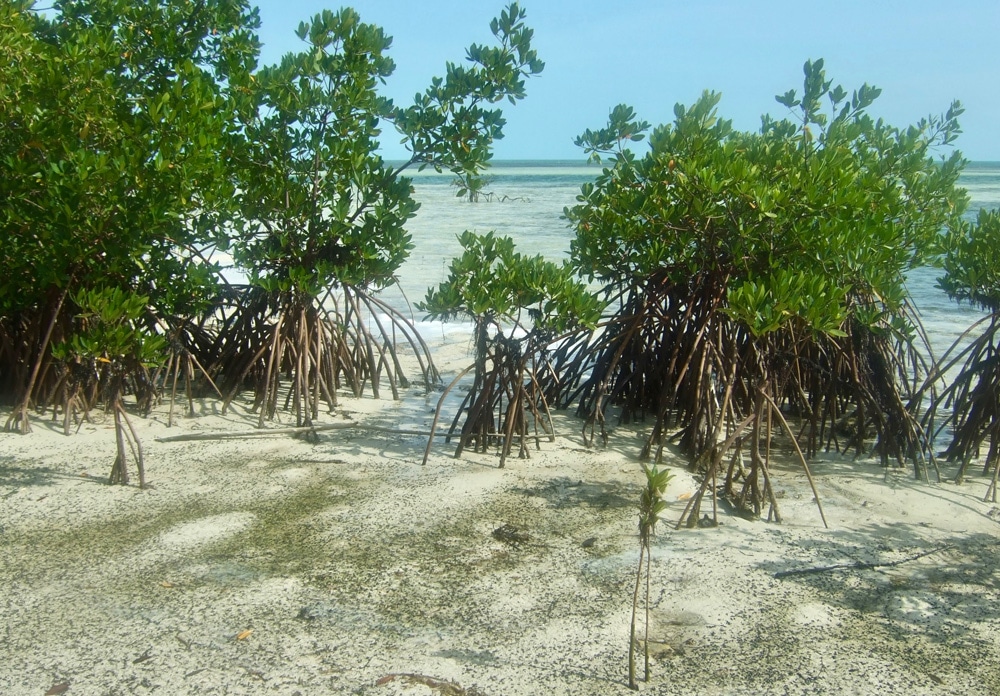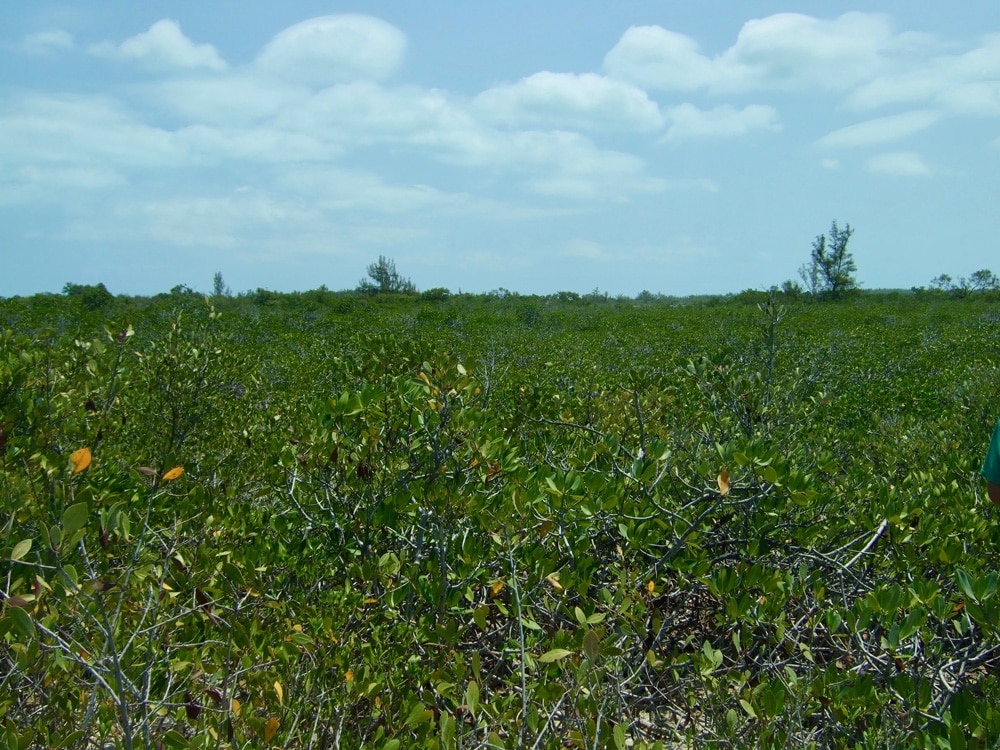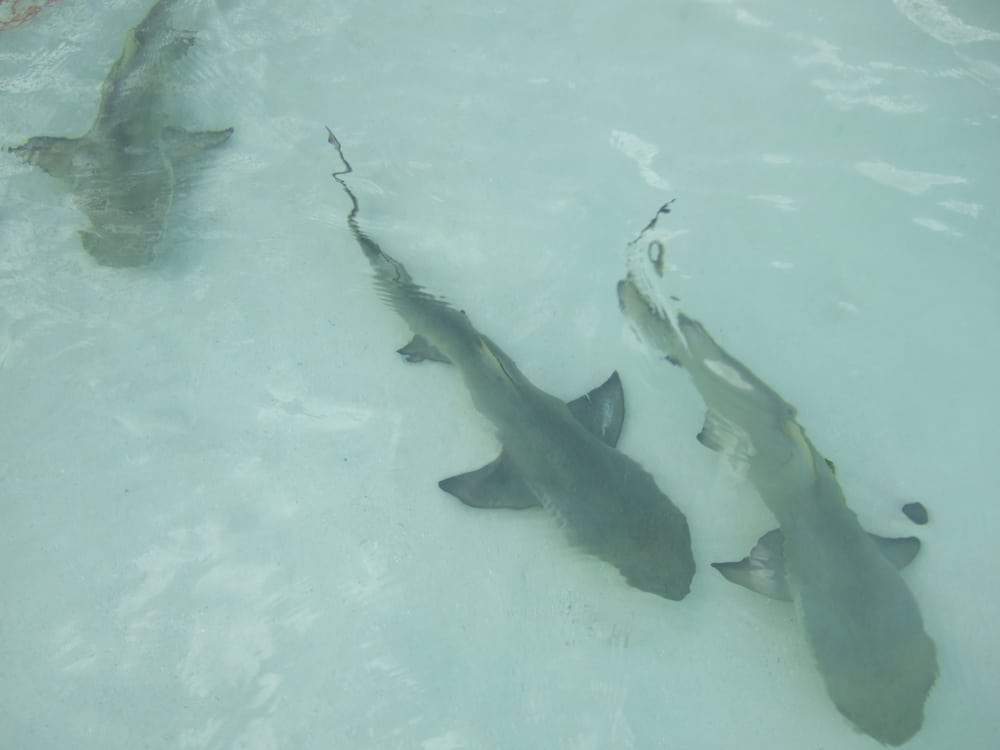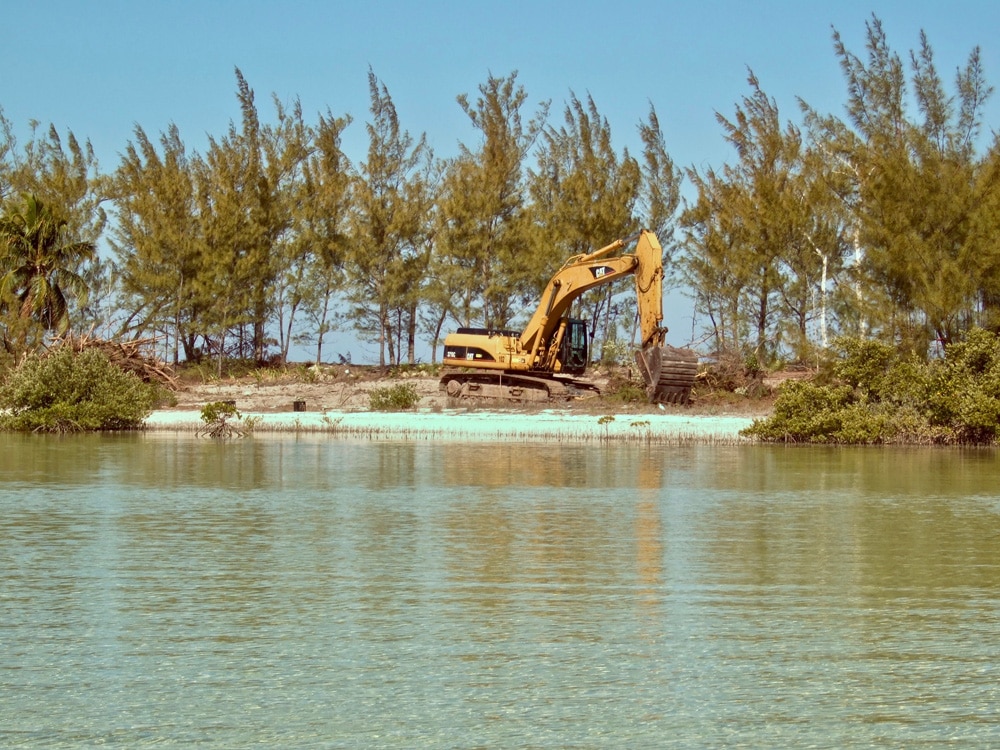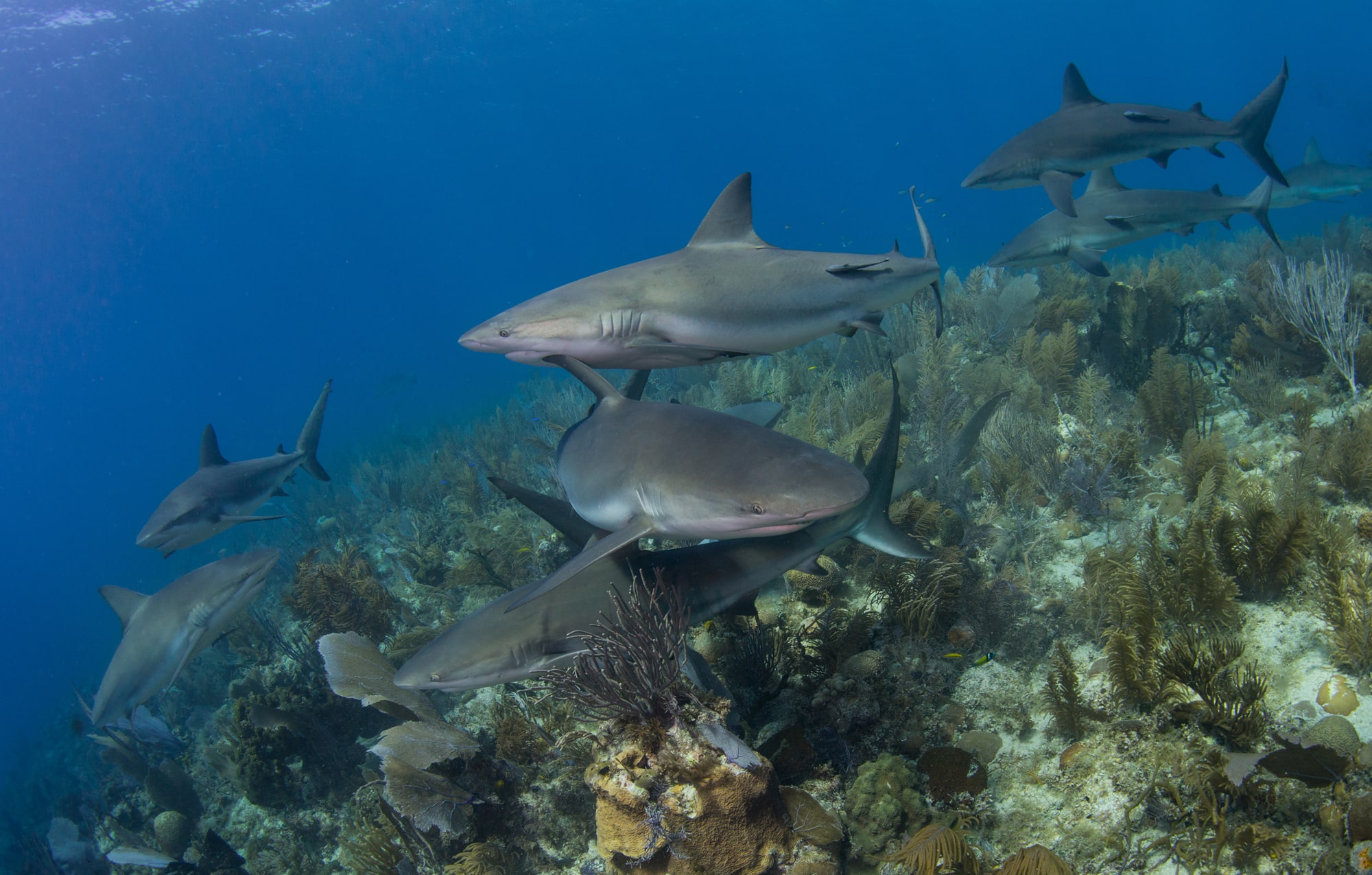Marine Life & Conservation
Marvellous mangroves!
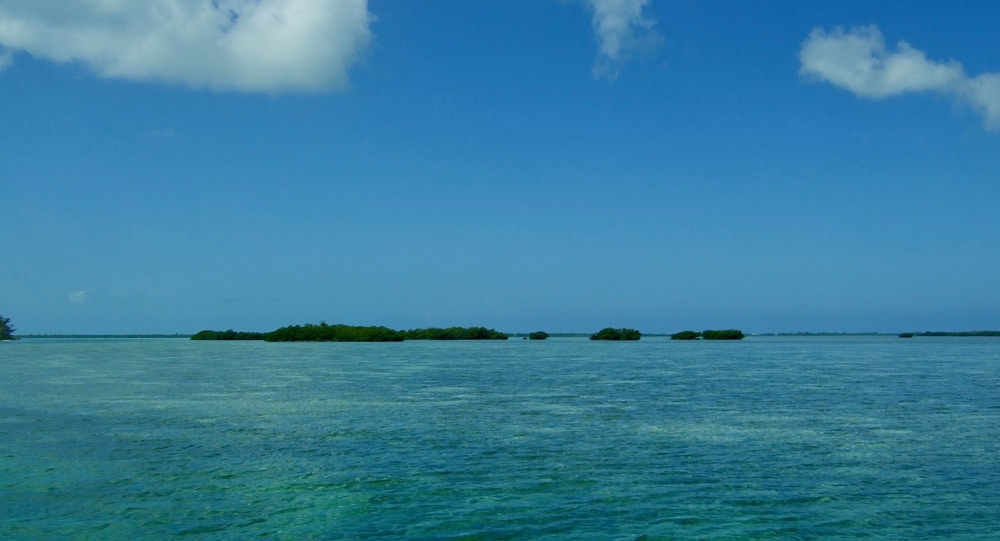
As divers, I’m guessing most of us love diving on coral reefs; if those reefs are pristine and full of life, even better! Coral reefs are incredible and diverse ecosystems, but they are strongly linked and interdependent on three other ecosystems: seagrasses, mangroves and rivers. Here I’m going to discuss mangroves, and why they are one of the most important ecosystems to conserve in order to have beautiful, healthy coral reefs. Hopefully I can convince every diver to love them as much as I do and to explore our options in protecting these habitats. Though historically, mangroves were viewed as insect filled, tangled and muddy swamps and shrub forests, we have become increasingly aware of how diverse and special this amazing habitat is for both wildlife and protecting our shorelines from extreme weather events.
So, what is a mangrove?
Mangroves are trees and shrubs that love very warm, wet conditions and grow in saline coastal habitats in tropics and subtropics. You have probably seen them fringing islands and coastlines when diving on coral reefs. They can often be recognised by their dense tangle of prop root that make the trees look like they are on stilts. Mangroves are unique because they can live in areas with low oxygen soil and where the water has a variable salt content. As they live in the coastal intertidal zone, the roots can cope with being flooded twice a day. They are flowering plants, where the upper trunk, branches and leaves live above the water line and the lower trunk and roots can live below.
There are over 80 different species of mangrove tree and several more species associated with mangroves for their ability to tolerate the coastal intertidal zone, such as buttonwoods. The Asia-Pacific region has the most diversity and the largest mangrove region in the world is The Great Sundarbans in Bangladesh (a UNESCO World Heritage Site). Having said this, there are three main dominant types of mangroves in a mangrove forest; red, black and white.
Red mangroves are evergreen trees that can grow to 25m, often less. They live closest to the water and elaborate arching prop roots and red bark colour make it very easy to identify. They are salt excluders; the roots contain a waxy substance that helps keep the salt out. If any salt does get through, it is deposited in older leaves and the tree sheds them. They produce propagules (seeds) that grow from the tree, then detach and stick into the mud or float away somewhere new.
Black mangroves live between red and white mangroves. The easily identifiable roots (pneumatophores) stick up vertically from sediment and are specially designed to take in oxygen, acting like snorkels in the water. Black mangroves have longer pointed leaves which are often covered in salt crystals and dark scaly bark. They produce seeds which germinate while still connected to the parent tree, so trees are often grouped together.
White mangroves live closest to the land in the back portion of the mangrove swamps, where they are unaffected by tidal inundation, except on spring tides. With no visible aerial roots, they may seem harder to identify, but the leaves have two glands at the base which excrete the salt taken in by the roots, so the leaves are often coated with white salt crystals. The salt crystals give this species its common name and the bark is lighter in colour.
Why should we love them?
Mangroves are ecosystem engineers, meaning they form their own ecosystem and provide habitats for other species, but they also have lots of benefits to us:
- Trapping sediments
Mangrove forests have huge root systems that slow the movement of tidal waters, making the sediment settle out of the water, the roots then trap this soft sediment and build up the muddy bottom. In dense forests, mangroves have created entire islands.
- Reducing wave action
The network of sediment-trapping roots stabilize the coastline, reducing erosion from wave and tidal action and providing a buffer, an important defence for costal ecosystems and communities from tropical storms and their storm surges.
- Important nursery grounds
Mangroves provide an intricate network of nursery habitat for many fish and invertebrate species, which move out to coral reefs and other ecosystems when they mature. The mangroves provide a safe haven for juvenile fish, including commercially important fisheries species, which seek food and shelter from predators. Many shark species, including lemon sharks, bull sharks and blacktip sharks, spend their juvenile years in mangrove forests.
- Rich biodiverse ecosystems
In addition to being a great habitat for the young of reef and pelagic species, mangroves are a primary habitat for mature individuals of many species of marine animal, amphibians, reptiles, seabirds and waterfowl. Mangroves are always teeming with life!
For anyone who enjoys diving on coral reefs, it is important to be aware that coral reefs and mangroves have a symbiotic relationship – the reefs protect the coast from being eroded by the sea, blocking the power of the open ocean and the mangroves trap the sediment washed from the land that would smother and kill the reef. Species depend on both ecosystems for different life stages and both ecosystems provide coastal protection and commercial value through fish stocks and tourism for us. Mangroves are one of the most valuable ecosystems in the world.
Threats
Unfortunately, like coral reefs, mangrove forests are under threat and are being lost at a very rapid rate. Clear cutting for aquaculture, mainly shrimp farming and coastal developments, such as marinas, housing and hotels is a major issue, as is harvesting for wood.
It is estimated that at least one third of all mangrove forests have been lost in the last few decades. Without protection, they may disappear in areas that cannot afford the ecological or economic loss. This in turn negatively effects our beloved coral reefs, which are already struggling with pollution, sedimentation, climate change, ocean acidification, overfishing and destructive commercial practices. After that thoroughly depressing paragraph, lets move onto the positive bit…
What can we do to help?
- Help support and encourage more protected areas. If you are travelling in an area with a protected area, donate or take a guided tour from rangers.
- Make sustainable choices; shrimp farming is a leading cause of mangrove habitat loss, know where your food is coming from and whether you should be making that choice. If you don’t want to give up a food, there is usually a sustainable option – it may cost a little extra, but it will be completely worth it!
- Spread the word! As ever, education is always important and particularly in countries with mangrove forests; many NGO’s work in schools to educate the next generation, which we can support through donations. However it isn’t just about spreading the word in other countries, the more people everywhere learn about the value of mangrove forests, the more drive there will be to protect this amazing habitat!
Visiting the mangroves
So, if you are now totally hooked on marvellous mangroves and want to go and see the wildlife for yourself, there are now many places that will take you snorkelling or on kayak tours. By picking an organisation that donates to mangrove protection or does educational programmes you get to help out while having a great time!
Marine Life & Conservation
Double Bubble for Basking Sharks

 The Shark Trust is excited to announce that, for two more days only, all donations, large or small, will be doubled in the Big Give Green Match Fund!
The Shark Trust is excited to announce that, for two more days only, all donations, large or small, will be doubled in the Big Give Green Match Fund!
Donate to Basking in Nature: Sighting Giants
The Shark Trust is hoping to raise £10k which will be doubled to £20k. This will go towards Basking in Nature: Sighting Giants. And they need YOUR help to reach they’re goal.
The Shark Trust’s citizen science project is to monitor and assess basking sharks through sightings; encouraging data collection, community engagement, and promoting nature accessibility. This initiative aims to enhance health and wellbeing by fostering a deeper connection with British Sharks.
Campaign Aims
- Increase citizen science reporting of Basking Sharks and other shark sightings to help inform shark and ray conservation.
- Provide educational talks about the diverse range of sharks and rays in British waters and accessible identification guides!
- Create engaging and fun information panels on how to ID the amazing sharks and rays we have on our doorstep! These can be used on coastal paths around the Southwest. With activities and information on how you can make a difference for sharks and rays!
- Promote mental wellbeing through increasing time in nature and discovering the wonders beneath the waves!
Donate, and double your impact. Click Here
Marine Life & Conservation
Leading UK-based shark conservation charity, the Shark Trust, is delighted to announce tour operator Diverse Travel as a Corporate Patron
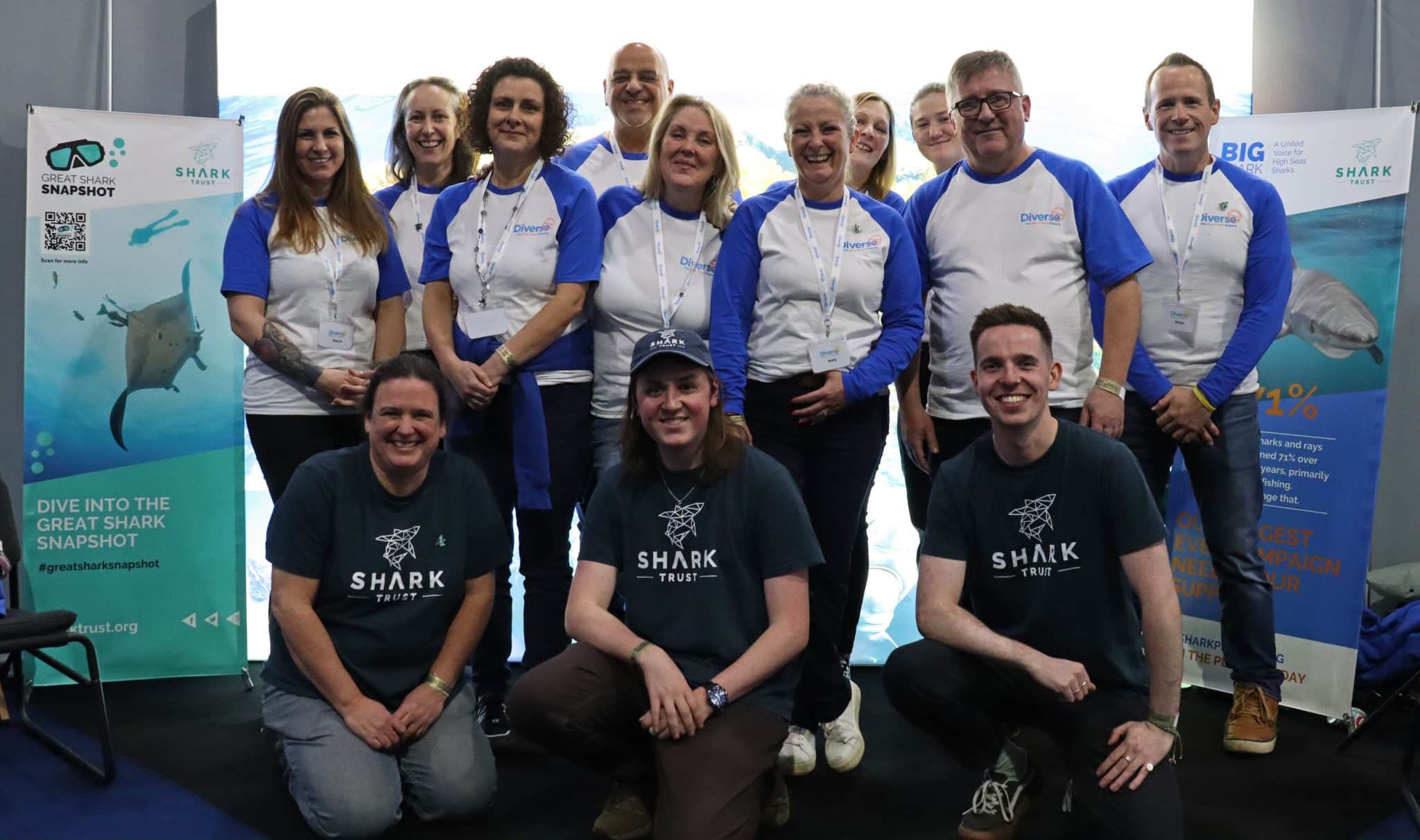
 Corporate Patrons provide a valuable boost to the work of The Shark Trust. The Trust team works globally to safeguard the future of sharks, and their close cousins, the skates and rays, engaging with a global network of scientists, policymakers, conservation professionals, businesses and supporters to further shark conservation.
Corporate Patrons provide a valuable boost to the work of The Shark Trust. The Trust team works globally to safeguard the future of sharks, and their close cousins, the skates and rays, engaging with a global network of scientists, policymakers, conservation professionals, businesses and supporters to further shark conservation.
Specialist tour operator Diverse Travel has operated since 2014 and is committed to offering its guests high quality, sustainable scuba diving holidays worldwide. Working together with the Shark Trust will enable both organisations to widen engagement and encourage divers and snorkellers to actively get involved in shark conservation.
“Sharks are truly at the heart of every diver and at Diverse Travel, we absolutely share that passion. There is nothing like seeing a shark in the wild – it’s a moment that stays with you forever!” says Holly Bredin, Sales & Marketing Manager, Diverse Travel.
“We’re delighted to celebrate our 10th year of business by becoming a Corporate Patron of the Shark Trust. This is an exciting partnership for Diverse and our guests. We will be donating on behalf of every person who books a holiday with us to contribute towards their vital shark conservation initiatives around the world. We will also be working together with the Trust to inspire divers, snorkellers and other travellers to take an active role – at home and abroad – in citizen science projects and other activities.”
Paul Cox, CEO of The Shark Trust, said:
“It’s an exciting partnership and we’re thrilled to be working with Diverse Travel to enable more divers and travellers to get involved with sharks and shark conservation. Sharks face considerable conservation challenges but, through collaboration and collective action, we can secure a brighter future for sharks and their ocean home. This new partnership takes us one more valuable step towards that goal.”
For more information about the Shark Trust visit their website here.
For more about Diverse Travel click here.
-

 News3 months ago
News3 months agoHone your underwater photography skills with Alphamarine Photography at Red Sea Diving Safari in March
-

 News3 months ago
News3 months agoCapturing Critters in Lembeh Underwater Photography Workshop 2024: Event Roundup
-

 Marine Life & Conservation Blogs2 months ago
Marine Life & Conservation Blogs2 months agoCreature Feature: Swell Sharks
-

 Blogs2 months ago
Blogs2 months agoMurex Resorts: Passport to Paradise!
-

 Blogs2 months ago
Blogs2 months agoDiver Discovering Whale Skeletons Beneath Ice Judged World’s Best Underwater Photograph
-

 Gear Reviews3 months ago
Gear Reviews3 months agoGear Review: Oceanic+ Dive Housing for iPhone
-

 Marine Life & Conservation2 months ago
Marine Life & Conservation2 months agoSave the Manatee Club launches brand new webcams at Silver Springs State Park, Florida
-

 Gear Reviews2 weeks ago
Gear Reviews2 weeks agoGEAR REVIEW – Revolutionising Diving Comfort: The Sharkskin T2 Chillproof Suit


